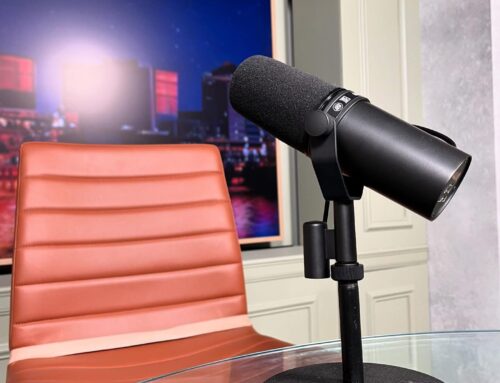 If you do your job properly in the production industry, especially in the field of audio, the end product is a seamless and transparent sensory experience for the audience. How we achieve that is a solid combination of grit, time tested methods, and a little bit of creativity. With my job being to design the systems that we send out, I know I have done my job properly when something I cook up elicits a “hey that’s cool.” I’m lucky to have a really talented team that takes those ideas and flies with them, and are not afraid to come up with ideas on their own. It’s the combination of those little things that make our work a little more transparent to the audience, and pleasing for the techs.
If you do your job properly in the production industry, especially in the field of audio, the end product is a seamless and transparent sensory experience for the audience. How we achieve that is a solid combination of grit, time tested methods, and a little bit of creativity. With my job being to design the systems that we send out, I know I have done my job properly when something I cook up elicits a “hey that’s cool.” I’m lucky to have a really talented team that takes those ideas and flies with them, and are not afraid to come up with ideas on their own. It’s the combination of those little things that make our work a little more transparent to the audience, and pleasing for the techs.
Our business was born from the intersection of the necessity to make good sound, the desire to constantly improve, and the ability to physically implement anything we could dream up. One of my favorite inventors, Thomas Edison once said: “I have not failed, I have simply found 10,000 ways that won’t work.” Certainly for Thomas Edison it was acceptable to burn through 10,000 filaments in his laboratory until he found the perfect filament for his electric light. Unfortunately in show biz, you really don’t want a single failure, let alone 10,000.
So how do we stay creative and try new things while mitigating potential for failure? We do it by constantly looking for inefficiencies in the process that either slow us down, or cause inconsistent results. Once we have identified those problems, we use what skills and resources we have on hand to create a solution. Each solution then serves as a prototype for the next. Along the way in the process, we evaluate the prototype against real world results. In show business, these are pretty well defined for us; Does it hold up on the road? Does it save time? Is there some audible or visual improvement in the end product to the client?
 I think the most enriching thing about this process is that it creates a much deeper understanding of what we do. When you create or design a product or process, you know it down to the component level. Things inevitably break down given the forces at play in our industry. The process of restoring to normal operation are lightning fast because we studied and analyzed every possible weak link in the chain. When you maintain the inventors mentality of trying to find those 10,000 things that aren’t working, you see it as a challenge to keep looking for idea 10,0001 that works instead of accepting failure.
I think the most enriching thing about this process is that it creates a much deeper understanding of what we do. When you create or design a product or process, you know it down to the component level. Things inevitably break down given the forces at play in our industry. The process of restoring to normal operation are lightning fast because we studied and analyzed every possible weak link in the chain. When you maintain the inventors mentality of trying to find those 10,000 things that aren’t working, you see it as a challenge to keep looking for idea 10,0001 that works instead of accepting failure.
What do I consider a failure in the production world? Failure for me is not building a bad piece of equipment, or having a system that doesn’t perform up to par. Failure is when you don’t recognize that you can do better, and are unwilling to push for that idea 10,001 that finally does work. Success is being observant enough to recognize there is always upward mobility in the quality of work you do. If you think about every invention ever made, everything that was ever needed to make it come to life has existed since the cosmic formation of our universe. All it took was the right combination of those elements, and a lot of time, thought, and the desire to do it better. For me that’s the most rewarding part of this job.






